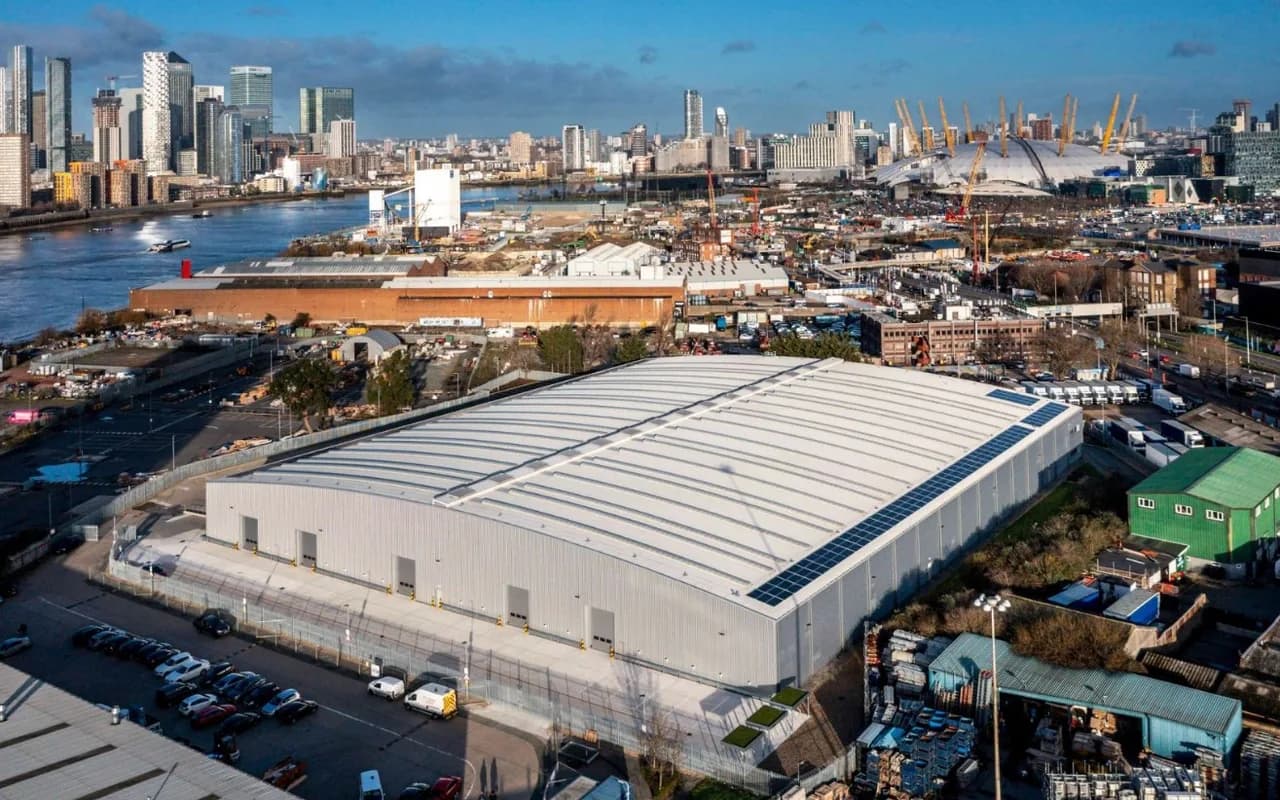
We stand on the cusp of an onshoring boom. In the face of higher costs and continued global supply chain disruption – driven by conflict and Brexit regulation, among other things – manufacturers and logistics outfits the world over are rushing to house their operations within key markets. The UK is no different.
According to one survey, 82% of UK manufacturers intend to increase the pace of onshoring in the next two years. On the logistics side, Nike – which previously serviced the UK from Belgium – in May launched its first standalone UK logistics site, a 1.3m sq ft hub in Corby. Inditex, meanwhile, agreed a deal for a 600,000 sq ft site in Daventry late last year, shuffling its UK operations over from Spain.
But it’s not always plain sailing. While the UK was the 19th century’s leading global manufacturer, much has happened in the past 200 years. Today, occupiers and developers face new challenges in bringing industrial and logistics sites back to these shores, with power supply being one hurdle that is repeatedly appearing.
At a time when markets are slow (but beginning to pick up), parties must find new ways to accelerate negotiations and get deals done.
Power to the people
As part of a recent DTRE survey, access to power emerged as the key issue facing occupiers in 2024, identified by more than 70% of the over 2,000 key industrial and logistics personalities surveyed (followed distantly by staffing issues, at 50%).
Manufacturing and logistics, naturally, is power intensive – more so than for the occupier uses that have dominated in recent years. With ever-increasing use of automation and robotics, too, the demand for power – even in smaller sites – is intense.
However, speculative developments are not being developed with power to meet this demand. Nobody wants to pay for power that isn’t being used – neither landlords in development nor tenants through standing charges. But it takes time and effort to meet these power demands – perhaps more so than is necessary.
China leads the way in terms of electricity production, producing 8,833 TWh as of 2022, followed distantly by the US (4,510 TWh). While these hold little sway when it comes to onshoring, closer neighbours Germany (578 TWh) and France (473 TWh) are also out-generating the UK’s 325 TWh. Where occupiers can benefit from more readily available power sources, the UK risks missing out on the benefits of onshoring through the process of “friend-shoring”: moving sites to nearby states instead.
Greasing the cogs
To avoid this, and to capture and capitalise on demand from high power users, developers must reconsider their approach to meeting power requirements. For occupiers, it’s a fundamental requirement – one that it appears is currently an afterthought, and one slowing down deal progress.
While landlords and developers are looking at alternative renewable sources which align to their ESG strategies (for example, solar photovoltaics), this generally doesn’t provide the additional power to meet occupiers requirements.
This is not about future-proofing – these are issues already facing occupiers today
Instead, quotes and installation for the requisite power upgrades need to happen faster. At a time when deals are taking longer and longer, everyone must play their part in ensuring there are no further unnecessary delays.
For electricity suppliers, they must ensure that the grid is reliable enough to meet new demand, that upgrades can be implemented at speed, and that the necessary shift to renewables does not come at the expense of reliability and round-the-clock service.
Putting the power in Northern Powerhouse
This is not about future-proofing – these are issues already facing occupiers today. The North West is a region with great potential to return to its history as a leading manufacturing hub, but in our experience, the gaps between power supply and demand are growing.
We have seen occupier requirements up to 16 times greater than those being delivered on speculative developments, which has created delays. Elsewhere, housing developers in west London were told that it would take “several years” for new electricity connections to be delivered, and a car park in Northamptonshire was put on a three- to four-year waiting list to power up its lighting and electric vehicle charging points.
Clearly, these are wider infrastructure challenges and the buck does not stop with developers. And that’s not to say that deals aren’t being done: we are currently advising on a number of leasing transactions where power increases are structured into a deal. However, this takes time and is further slowing down the already slow transaction process.
It’s not all doom and gloom. Of those already engaged in the onshoring process, 90% report successful outcomes. It’s a driver of security and resilience, cost savings and emissions reductions, providing boosts to local economies and fostering innovation ecosystems across the UK.
For developers, reassessing their approach to power allocation will enable more high power users to return to the UK and see earlier rental returns on their assets. Lethargy has crept into elements of dealmaking within the industrial and logistics market – shaking off the cobwebs is a win-win.
By considering power at an earlier phase in their decision-making, developers and landlords can stand out from the crowd and meet rising demand for high power spaces.



